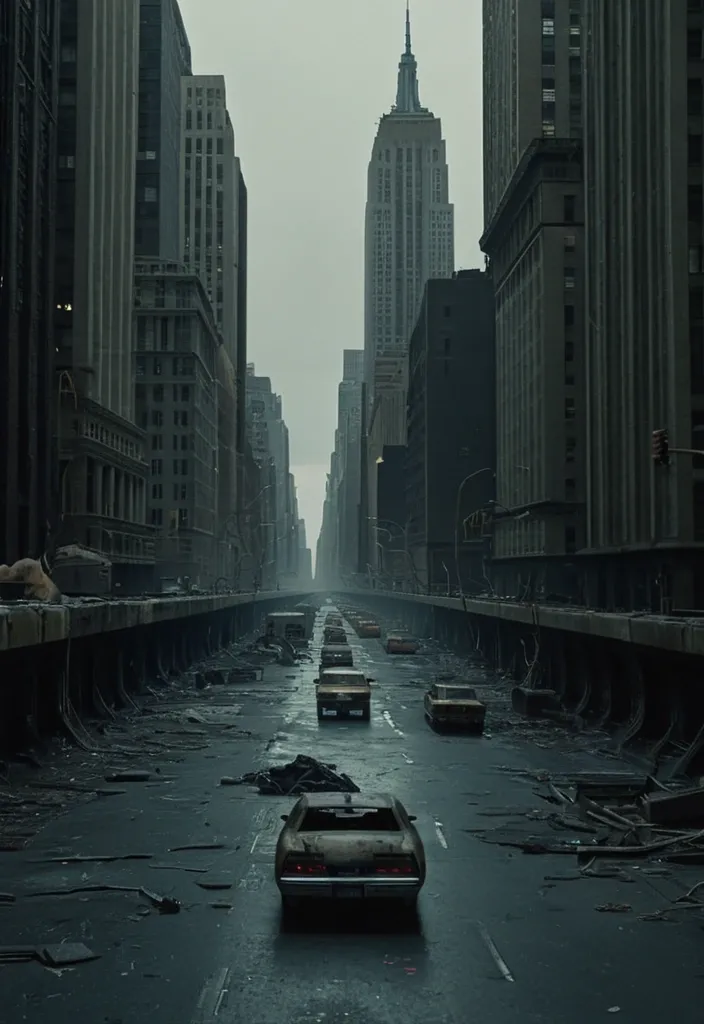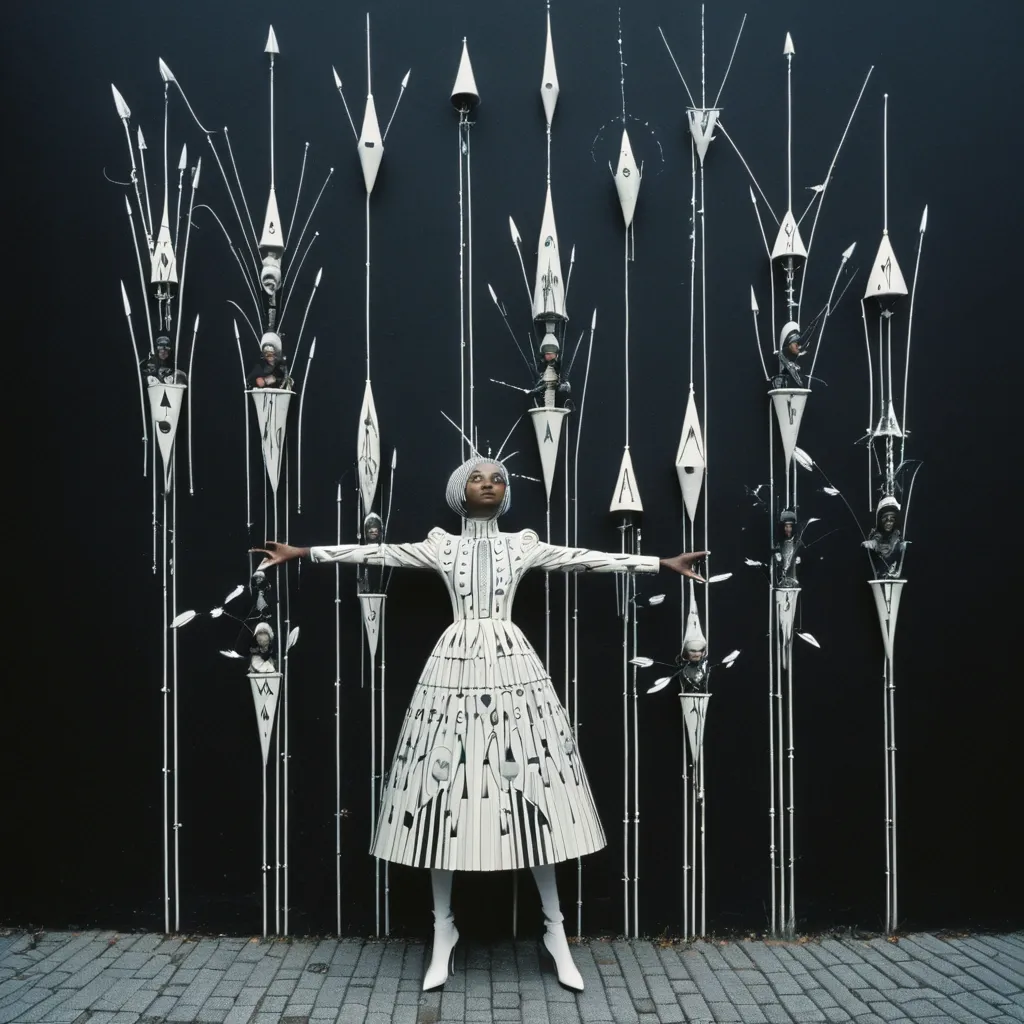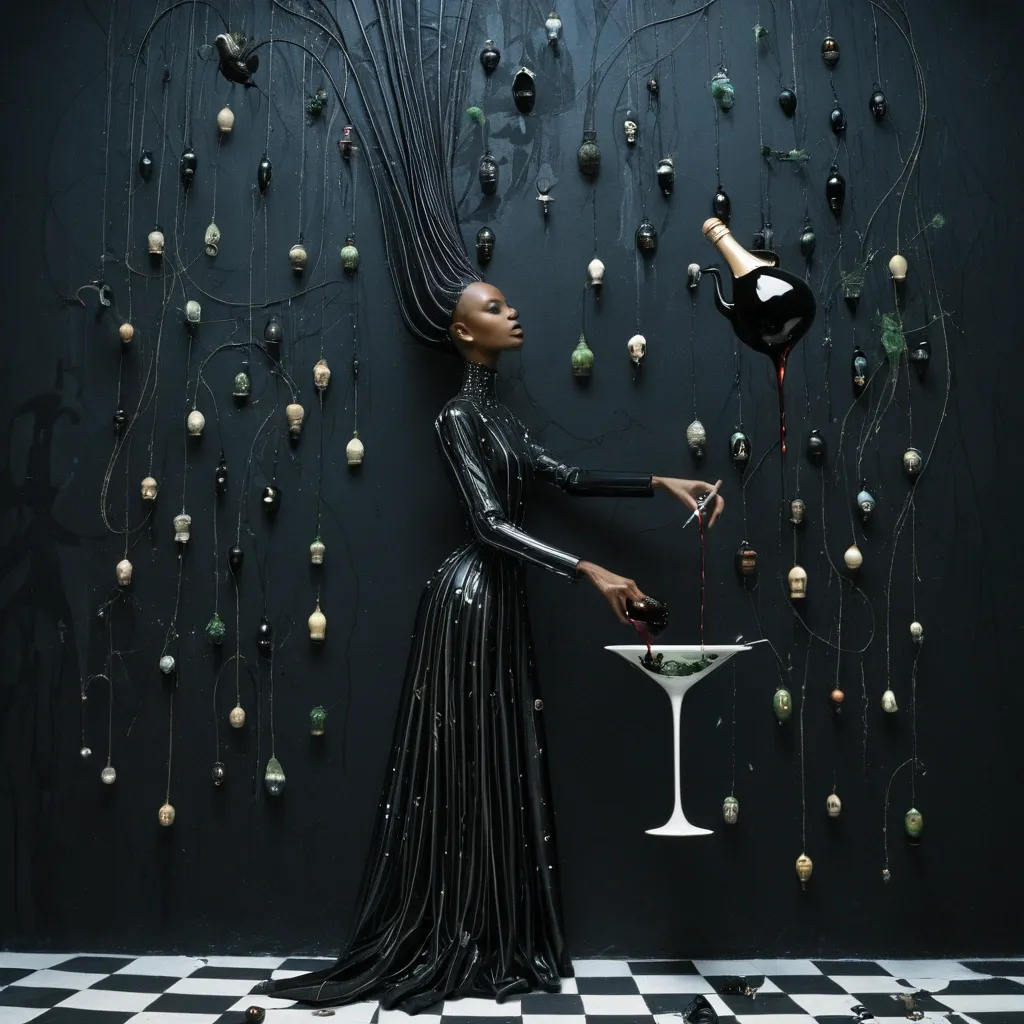Search Results for future
Explore AI generated designs, images, art and prompts by top community artists and designers.

Holy healing masterpiece: Surreal digital art: A temple made of feathers and stone , floating above ocean. Inside: A figure meditates mid-air , half-body crystalline (ancestral patterns) , half-body luminous smoke (future forms). Below: Whales singing ancient-future hymns. --ar 21:9 --style raw --v 6 --seed 2608 ,

Holy healing masterpiece: Surreal digital art: A temple made of feathers and stone , floating above ocean. Inside: A figure meditates mid-air , half-body crystalline (ancestral patterns) , half-body luminous smoke (future forms). Below: Whales singing ancient-future hymns. --ar 21:9 --style raw --v 6 --seed 2608 ,

Holy healing masterpiece: Surreal digital art: A temple made of feathers and stone , floating above ocean. Inside: A figure meditates mid-air , half-body crystalline (ancestral patterns) , half-body luminous smoke (future forms). Below: Whales singing ancient-future hymns. --ar 21:9 --style raw --v 6 --seed 2608 ,

Holy healing masterpiece: Surreal digital art: A temple made of feathers and stone , floating above ocean. Inside: A figure meditates mid-air , half-body crystalline (ancestral patterns) , half-body luminous smoke (future forms). Below: Whales singing ancient-future hymns. --ar 21:9 --style raw --v 6 --seed 2608 ,

Holy healing masterpiece: Surreal digital art: A temple made of feathers and stone , floating above ocean. Inside: A figure meditates mid-air , half-body crystalline (ancestral patterns) , half-body luminous smoke (future forms). Below: Whales singing ancient-future hymns. --ar 21:9 --style raw --v 6 --seed 2608 ,

Holy healing masterpiece: Surreal digital art: A temple made of feathers and stone , floating above ocean. Inside: A figure meditates mid-air , half-body crystalline (ancestral patterns) , half-body luminous smoke (future forms). Below: Whales singing ancient-future hymns. --ar 21:9 --style raw --v 6 --seed 2608 ,

Holy healing masterpiece: Surreal digital art: A temple made of feathers and stone , floating above ocean. Inside: A figure meditates mid-air , half-body crystalline (ancestral patterns) , half-body luminous smoke (future forms). Below: Whales singing ancient-future hymns. --ar 21:9 --style raw --v 6 --seed 2608 ,

Holy healing masterpiece: Surreal digital art: A temple made of feathers and stone , floating above ocean. Inside: A figure meditates mid-air , half-body crystalline (ancestral patterns) , half-body luminous smoke (future forms). Below: Whales singing ancient-future hymns. --ar 21:9 --style raw --v 6 --seed 2608 ,

Physical Characteristics: Size & Weight: Between 40 to 60 feet in length , weighing 50 to 75 tons. Coloration: Males: Sleek black base with dark gray tiger stripes accented by subtle red bioluminescent highlights along the stripes , glowing faintly in deep ocean darkness. Females: Larger and more robust with black base and light gray tiger stripes , also featuring red bioluminescent patterns that pulse rhythmically. Body Structure: Hydrodynamic , muscular body combining the streamlined agility of the Shortfin Mako and Black Marlin with the robust power of Predator X and Megalodon. Rigid pectoral fins adapted from Black Marlin , capable of tilting back to reduce drag at high speeds. The tailend is a powerful fluke for propulsion , inspired by Mosasaurus Hoffmannii and Orca anatomy. Thick , overlapping bony scales similar to Arapaima , providing a durable armor that flexes with movement. Limbs: Powerful large flippers adapted for scooting or sliding on land , coated with mucus inspired by the Atlantic hagfish for moisture retention and defense. Capable of limited terrestrial movement , allowing brief excursions out of water. Head & Jaw: Massive jaws with over 40 , 000 PSI bite force , blending Predator X’s mighty jaw strength with the long canine teeth and powerful bite of the Leopard Seal. Flexible skull allowing swallowing of large prey whole. Respiration: Dual respiratory system with both functional lungs and gills , enabling survival from surface to abyssal depths (500 to 9 , 800 feet). Bioluminescence: Red bioluminescent photophores patterned in tiger stripes , used for communication , intimidation , mating displays , and luring prey in the dark ocean depths. Abilities & Traits: Speed & Agility: Capable of bursts up to 82 mph , rivaling the fastest sea creatures like the Black Marlin. Agile hunter using stealth and passive listening , mimicking Transient Killer Whale hunting strategies. Social Structure: Small family groups of three (one male , two females) designed for efficient reproduction and hunting. Males are more streamlined and shorter , optimized for speed and power; females are larger , robust , and agile for endurance and nurturing. Regeneration: Remarkable limb regeneration inspired by axolotl and Crown-of-Thorns starfish , able to regrow lost fins , limbs , and even parts of internal organs. Defense: Venomous spines derived from Crown-of-Thorns starfish line its dorsal ridge , delivering painful venomous wounds to attackers. Mucus coating for defense and moisture retention , also making it slippery and difficult to grasp. Healing: A blubber-like layer similar to dolphins provides insulation , buoyancy , and antimicrobial properties that accelerate healing of wounds. Communication: Uses low-frequency growls , barks , and hisses inspired by saltwater crocodile sounds , combined with bioluminescent signals and stealth vocalizations for hunting. Reproduction: Live births occur at extreme depths (up to 9 , 800 feet) , with offspring adapted to survive in crushing pressures and cold temperatures. Backstory: Created by the Ceno Evail Crossgen Corporation , the Megalosaurus Orca was engineered to dominate marine ecosystems and serve as a living testament to the pinnacle of hybrid dinosaur biotechnology. Designed to combine the raw power of ancient sea predators like Predator X and Megalodon with the intelligence , social hunting , and adaptability of modern marine mammals and fish , this hybrid thrives in the dark , cold depths of the ocean where few predators dare to venture. Their unique physiology allows them to traverse both deep ocean trenches and brief terrestrial environments , making them versatile apex predators. The three known individuals—one male and two females—form a tight-knit family unit , hunting elusive marine mammals and large fish with stealth and precision. Their bioluminescent stripes not only intimidate rivals but also help coordinate complex hunting maneuvers in pitch-black waters. With a lifespan of 100 to 135 years , they are long-lived titans of the sea , their legacy intertwined with the future of marine genetic engineering and the mysteries of oceanic evolution. , ,

Physical Characteristics: Size & Weight: Between 40 to 60 feet in length , weighing 50 to 75 tons. Coloration: Males: Sleek black base with dark gray tiger stripes accented by subtle red bioluminescent highlights along the stripes , glowing faintly in deep ocean darkness. Females: Larger and more robust with black base and light gray tiger stripes , also featuring red bioluminescent patterns that pulse rhythmically. Body Structure: Hydrodynamic , muscular body combining the streamlined agility of the Shortfin Mako and Black Marlin with the robust power of Predator X and Megalodon. Rigid pectoral fins adapted from Black Marlin , capable of tilting back to reduce drag at high speeds. The tailend is a powerful fluke for propulsion , inspired by Mosasaurus Hoffmannii and Orca anatomy. Thick , overlapping bony scales similar to Arapaima , providing a durable armor that flexes with movement. Limbs: Powerful large flippers adapted for scooting or sliding on land , coated with mucus inspired by the Atlantic hagfish for moisture retention and defense. Capable of limited terrestrial movement , allowing brief excursions out of water. Head & Jaw: Massive jaws with over 40 , 000 PSI bite force , blending Predator X’s mighty jaw strength with the long canine teeth and powerful bite of the Leopard Seal. Flexible skull allowing swallowing of large prey whole. Respiration: Dual respiratory system with both functional lungs and gills , enabling survival from surface to abyssal depths (500 to 9 , 800 feet). Bioluminescence: Red bioluminescent photophores patterned in tiger stripes , used for communication , intimidation , mating displays , and luring prey in the dark ocean depths. Abilities & Traits: Speed & Agility: Capable of bursts up to 82 mph , rivaling the fastest sea creatures like the Black Marlin. Agile hunter using stealth and passive listening , mimicking Transient Killer Whale hunting strategies. Social Structure: Small family groups of three (one male , two females) designed for efficient reproduction and hunting. Males are more streamlined and shorter , optimized for speed and power; females are larger , robust , and agile for endurance and nurturing. Regeneration: Remarkable limb regeneration inspired by axolotl and Crown-of-Thorns starfish , able to regrow lost fins , limbs , and even parts of internal organs. Defense: Venomous spines derived from Crown-of-Thorns starfish line its dorsal ridge , delivering painful venomous wounds to attackers. Mucus coating for defense and moisture retention , also making it slippery and difficult to grasp. Healing: A blubber-like layer similar to dolphins provides insulation , buoyancy , and antimicrobial properties that accelerate healing of wounds. Communication: Uses low-frequency growls , barks , and hisses inspired by saltwater crocodile sounds , combined with bioluminescent signals and stealth vocalizations for hunting. Reproduction: Live births occur at extreme depths (up to 9 , 800 feet) , with offspring adapted to survive in crushing pressures and cold temperatures. Backstory: Created by the Ceno Evail Crossgen Corporation , the Megalosaurus Orca was engineered to dominate marine ecosystems and serve as a living testament to the pinnacle of hybrid dinosaur biotechnology. Designed to combine the raw power of ancient sea predators like Predator X and Megalodon with the intelligence , social hunting , and adaptability of modern marine mammals and fish , this hybrid thrives in the dark , cold depths of the ocean where few predators dare to venture. Their unique physiology allows them to traverse both deep ocean trenches and brief terrestrial environments , making them versatile apex predators. The three known individuals—one male and two females—form a tight-knit family unit , hunting elusive marine mammals and large fish with stealth and precision. Their bioluminescent stripes not only intimidate rivals but also help coordinate complex hunting maneuvers in pitch-black waters. With a lifespan of 100 to 135 years , they are long-lived titans of the sea , their legacy intertwined with the future of marine genetic engineering and the mysteries of oceanic evolution. ,

> Black and grey high-resolution drawing , highly detailed and semi-realistic — not a tattoo render but a clean , refined artwork for preparatory tattoo design. No color , pure pencil or ink style. Scene composed for outer bicep and shoulder , flowing naturally with muscle curvature. Central figure: traditional Thai Buddha sitting in a relaxed pose , head leaning into his hand , one knee raised , calm and compassionate expression. Classic Thai features: elongated earlobes , stylized spiral hair curls , soft smile , gentle downcast eyes. His robe drapes in realistic folds with soft shading , suggesting silk texture and weight. Behind and around the Buddha , a majestic Thai Naga coils in a dynamic upward S-shape. The Naga is a serpentine mythical creature from Thai Buddhist tradition , combining the grace of a snake with the divine power of a dragon. Its head is large , with a wide open mouth revealing sharp fangs , and flaming , arched eyebrows above intense eyes. It wears a multi-pointed crown or crest , adorned like a deity , with multiple ornate horns rising symmetrically. Two long , fin-like ears flow backwards from the sides of the head , resembling river currents. Its whiskers extend in thin , flowing arcs , adding sacred elegance. The body is long and muscular , covered in highly detailed , overlapping fish-like scales , shaded for volume and realism. As it coils behind the Buddha , its movement suggests both protection and spiritual energy , never overpowering the scene. In the background , above and to the shoulder side , a refined three-tier Thai pagoda or temple rises with gently curved rooflines and fine architectural details. The temple is small in scale to respect depth and balance , like a sacred silhouette above the scene. Floating across the composition: delicate Japanese cherry blossom petals , drifting through the air , adding spiritual poetry and motion. Style: hand-drawn ink or pencil illustration , black and grey only. Clean composition with anatomical logic , deep texture , and light atmospheric background. Emphasis on texture and balance: Buddha’s face: soft stone or skin-like texture Naga’s body: dense , glossy scaled pattern with high contrast Pagoda: wood and stone shading Cherry petals: soft , semi-translucent Composition must remain readable , elegant , and harmonious — suitable as a sacred and artistic foundation for a future tattoo design. ,

standing sympathetic ultramarine skinned Man asking sitting old Lady (with ultramarine blue Skin , white dreadlocks) writing , spotlight , future park in the background , hyperrealistic , photografic , 8k , epic ambient light , octane render , (best quality:1.4) , ((masterpiece)) , ((realistic)) , (detailed) , no ugly , no mutation , no duplicate , both in light white clothing , wideangle ,

standing sympathetic ultramarine skinned Man asking sitting old Lady (with ultramarine blue Skin , white dreadlocks) writing , spotlight , future garden in the background , hyperrealistic , photografic , 8k , epic ambient light , octane render , (best quality:1.4) , ((masterpiece)) , ((realistic)) , (detailed) , no ugly , no mutation , no duplicate , soft bodies in light white clothing , wideangle ,

standing sympathetic ultramarine skinned Man asking sitting old Lady (with ultramarine blue Skin , white dreadlocks) writing , spotlight , future garden in the background , hyperrealistic , photografic , 8k , soft ambient light , octane render , (best quality:1.4) , ((masterpiece)) , ((realistic)) , (detailed) , no ugly , no mutation , no duplicate , soft bodies , wideangle ,

standing sympathetic ultramarine skinned Man asking sitting on ground happy old Lady (with ultramarine blue Skin , white dreadlocks) writing , spotlight , future garden around , various plants , hyperrealistic , photografic , 8k , soft ambient light , octane render , (best quality:1.4) , ((masterpiece)) , ((realistic)) , (detailed) , no ugly , no mutation , no duplicate , soft bodies , wideangle ,

1 Man , ultramarineblue Skin , snowwhite dreadlocks , writing on sci-fi-desktop , lelaxed clothes shadow effect , spotlight , future home in the background , background blur , hyperrealistic , photografic , 8k , epic ambient light , (best quality:1.4) , ((masterpiece)) , ((realistic)) , (detailed) , ,

1 Man , ultramarineblue Skin , snowwhite dreadlocks , writing on sci-fi-desktop , legere clothes shadow effect , spotlight , future home in the background , background blur , hyperrealistic , photografic , 8k , epic ambient light , octane render (best quality:1.4) , ((masterpiece)) , ((realistic)) , (detailed) , ,

This is a magnificent scene of urban construction on the surface of the moon , kaleidoscopic strategy game city art , skyscraper , depicting an ecologically livable future city. The city is obviously glass and pedestrians and green vegetation can be seen everywhere. There is an eye-catching ArtHub advertisement on the building. The scene is reminiscent of cosmic surrealism , blending elements of Salvador Dali and Ernst Haeckel , rendered in the style of digital art with intricate details and vibrant colors. ,

A dark futuristic technology background with glowing blue polygonal network lines and light dots , forming a digital mesh. Abstract tech atmosphere with subtle code patterns and depth. Place modern , clean white and cyan text on the right side: "Aditi Pravin Hedaoo" (bold white) , "Aspiring Computer Science Engineer" (cyan) , "Future-Ready Technophile" (cyan). The design should feel minimal , sleek , and suitable for a LinkedIn cover (aspect ratio 4:1). No extra elements. Professional and high resolution. --ar 4:1 --v 6 --style raw --quality 2 ,

A vivid , close-up image of a young African Rasta standing center-stage , mid-speech , addressing an electrified crowd of youth with fiery passion about the promise of artificial intelligence in reshaping Africa’s future. His dreadlocks cascade over his shoulders , catching the warm stage lights , and his eyes burn with purpose and clarity. He wears a bold black t-shirt emblazoned with the words “ALX AI” in vibrant red , gold , and green—blending tech with pan-African pride. A microphone rests in one hand , while the other is lifted high , fingers spread , as if summoning the energy of the moment. Behind him , a glowing digital backdrop pulses with soft motion graphics of "ALX AI" , partially blurred to center attention on the speaker’s intensity. The scene is alive with color and rhythm—shadows and highlights dance across his face , capturing the beat of transformation. The atmosphere blends tech conference with cultural revolution , symbolizing a new generation rising at the intersection of identity , innovation , and liberation. ,
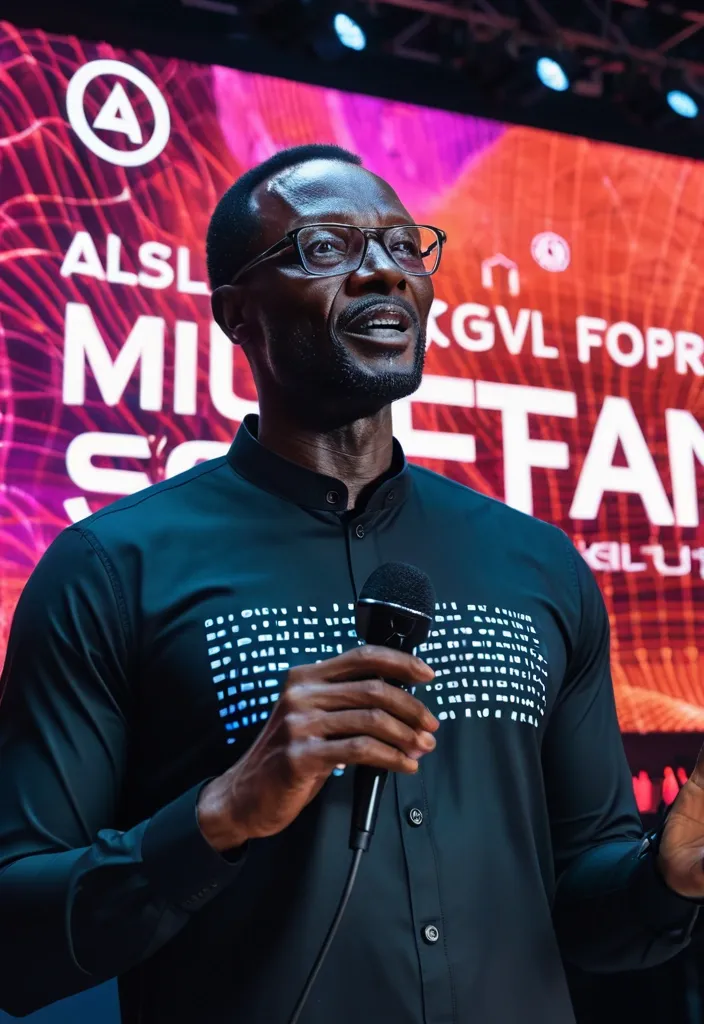
A dynamic , close-up image of President Ibrahim Traoré , mid-speech , passionately addressing a crowd of young Africans about the future of technology and the transformative power of artificial intelligence. His expression is focused yet hopeful , eyes lit with vision. He wears a sleek , dark shirt with "ALX AI" printed prominently across the chest , a subtle nod to innovation. In one hand , he holds a microphone; the other is raised in an emphatic gesture , underscoring his call to action. The background pulses with energy — softly blurred visuals of the words “ALX AI” stretch across a vibrant stage screen , framing the moment. Warm , even lighting brings out the texture of the scene , emphasizing Traoré’s presence and the excitement of a continent stepping boldly into the AI era. The overall mood is powerful , aspirational , and deeply rooted in African potential. ,

A dynamic and colorful illustration showing the passage of time in youth. The image features a young person growing and changing through different stages — from childhood to adolescence to early adulthood. Around them , symbols like clocks , calendars , and fading shadows show time moving forward. The background blends bright , energetic colors with soft , dreamy tones , representing growth , learning , and the journey of life. The young person looks hopeful and curious , surrounded by floating memories and future dreams. In a more sadness ambient ,
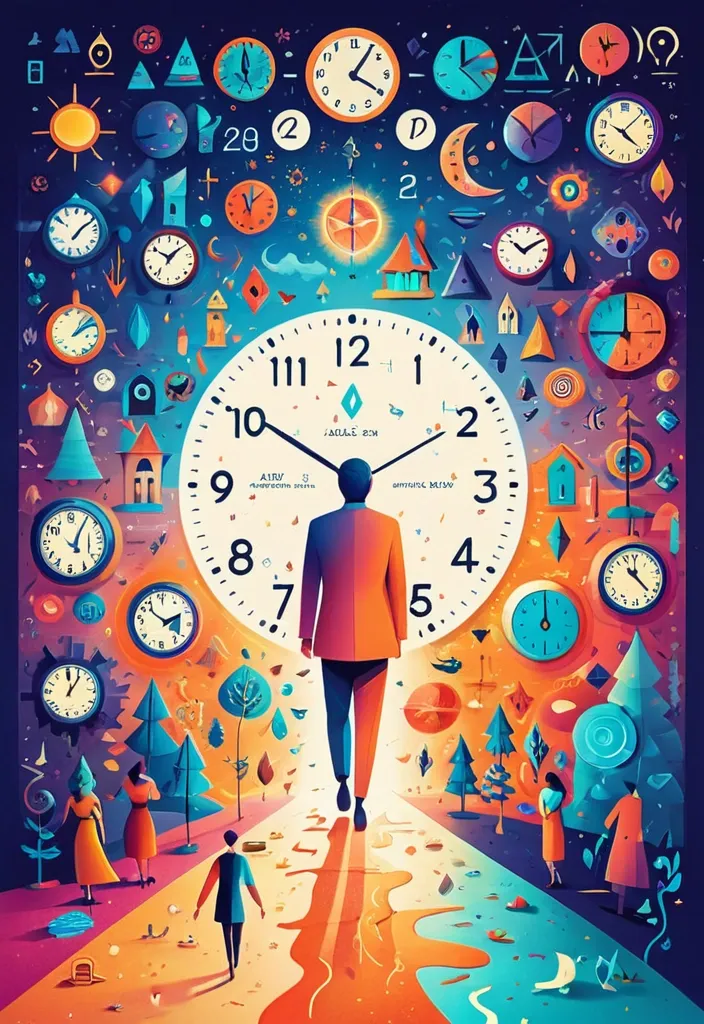
A dynamic and colorful illustration showing the passage of time in youth. The image features a young person growing and changing through different stages — from childhood to adolescence to early adulthood. Around them , symbols like clocks , calendars , and fading shadows show time moving forward. The background blends bright , energetic colors with soft , dreamy tones , representing growth , learning , and the journey of life. The young person looks hopeful and curious , surrounded by floating memories and future dreams. ,

A dynamic and colorful illustration showing the passage of time in youth. The image features a young person growing and changing through different stages — from childhood to adolescence to early adulthood. Around them , symbols like clocks , calendars , and fading shadows show time moving forward. The background blends bright , energetic colors with soft , dreamy tones , representing growth , learning , and the journey of life. The young person looks hopeful and curious , surrounded by floating memories and future dreams. ,

Logo for "SANTARA" — a cultural and living project in Bali. Style: minimalist , natural , architectural , sophisticated. Mood: earthy elegance , timeless , future-oriented. Palette: sand , terracotta , soft white , black. Typography: clean sans-serif , custom organic flow. Avoid obvious tree/leaf icons. Focus on abstract natural geometry. MINIMALISM PLS ,

Create a modern , minimalist , and timeless logo for "SANTARA" — an international cultural and living space located in Bali. The logo should feel organic yet architectural , inspired by nature , ancient civilizations , and future-forward design. Style references: soft geometric forms , natural textures (stone , wood , linen) , Mediterranean and Balinese influence , sacred geometry. Avoid clichés like leaves or trees unless they are abstract and integrated into the form. No obvious spiritual or mystical symbols. Key feelings to evoke: grounded elegance , authenticity , openness , innovation. Color palette: muted earth tones , sand , terracotta , soft white , black accents. Font direction: clean sans-serif or custom lettering , bold but natural flow. Slightly artistic or crafted look allowed. The logo must work well both with the word "SANTARA" alone and with a standalone icon.* ,

